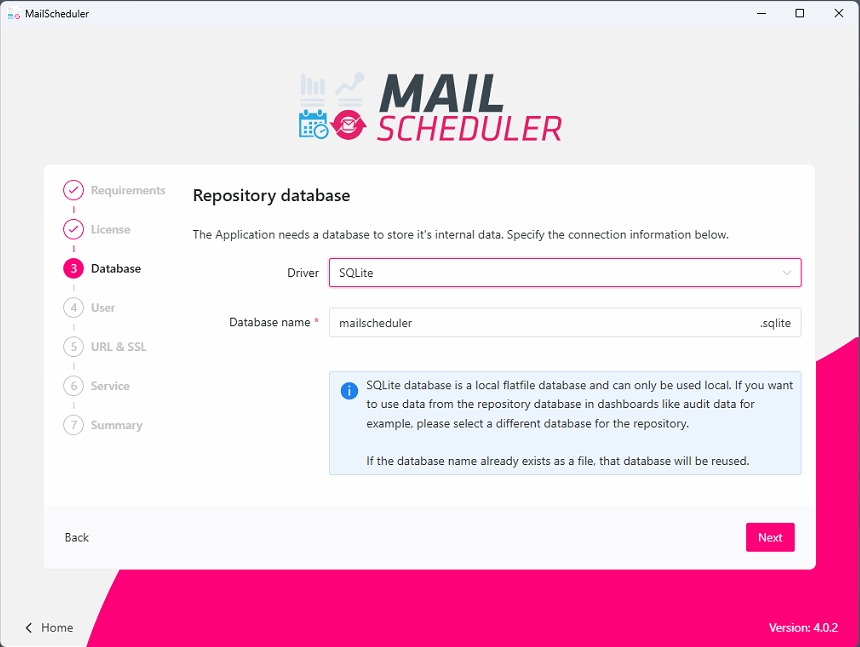SQLite
To use SQLite for a local flatline database, a database name must be defined. If this database name is already present, the existing database will be reused for MailScheduler. SQLite is a local flat-file database. This database should be used for testing only as you can’t connect to it from Tableau.
